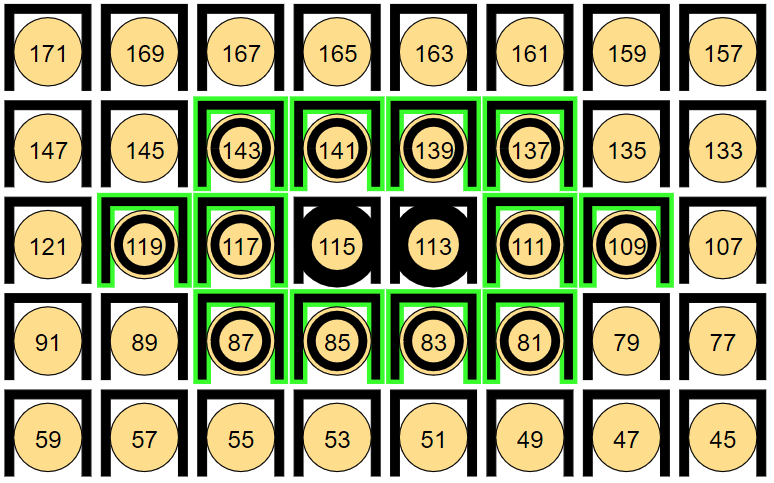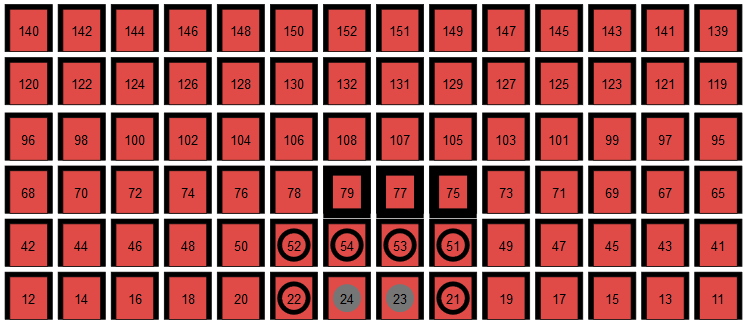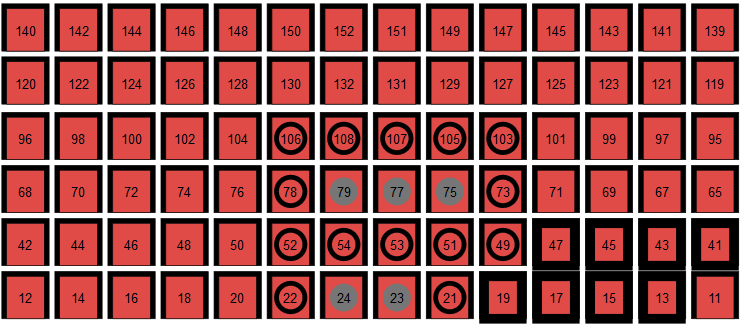NEW V2.12 COVID HELP Optimize your attendance while respecting the social distancing regulation of your region of operation. Our optimal seat selection algorithm will take into account your social distancing rules in order to provide the best possible seats for your customers.
Solution
Due to COVID-19 and resulting social distancing regulations, venues may only re-open under the condition they can enforce such regulations. This new feature will help you ensure free seats are blocked around customers ordering tickets together while optimizing attendance and allowing customers to choose their own seats. The social distancing rules are customizable and is applied on-the-fly, keeping the actual availability up-to-date.
- Automatic seat selection: upon seat request, the optimal seat selection algorithm will provide the best seats that ensure social distancing with other customers.
- Manual seat selection: upon seat selection, the system will create the necessary additional seat buffer to ensure social distancing with upcoming customers.
- Cancellation/refund: upon cancellation/refund of a seat, the system will automatically remove the seat buffer that are not required any longer.
As a consequence, a new reason for freezing attribute has been introduced and can modified directly from the seat map similarly to the reason for invalidation (view mode, filtering, etc.).
Getting started
Service required
The activation of this feature and the configuration of the social distancing threshold can be configured through a service request.
There are 3 parameters defining the number of empty seats to be frozen between different groups of customers.
- Horizontal distancing: Number of seats to freeze to the left and right of the selected seats on the same row, e.g., 2.
- Seats 109, 111, 117 and 119 in the example
- Vertical distancing: Number of seats to freeze directly above and below the selected seats, e.g., 1.
- Seats 83, 85, 139 and 141 in the example
- Corner distancing: Number of seats to freeze to the left and right of the seats frozen above and below, e.g., 1.
- Seats 81, 87, 137 and 143 in the example
This configuration can be set through a service at different levels (institution parameters):
- Institution: SOCIAL_DISTANCING_PARAM
- Physical configuration: SOCIAL_DISTANCING_PARAM.physicalConfigurationId
- Sales configuration: SOCIAL_DISTANCING_PARAM.saleConfigurationId
Default value:
{
"horizontalSocialDistancingGap":"0",
"verticalSocialDistancingGap":"0",
"cornerSocialDistancingHorizontalGap":"0",
"excludedSalesChannelTypes":["E_CONTINGENT","E_POOL_OFFICE","E_REMOTE_STATION","E_FNAC","E_DIGITICK","E_TICKETNET","E_DATASPORT","E_STXFILE","E_EXT_WITH_OP"],
"excludedSalesChannelIds":[]
}
Example
The best available seats are provided by the system and then the necessary social distancing seats are frozen, updating the availability accordingly and preventing other customers from purchasing those seats.
In this example with a configuration of 1-1-1, seats are requested in the following sequence:
- First 2 seats are purchased, freezing 6 seats around them.
- Then 3 seats are purchased, freezing 7 seats around them.
- Then 8 seats are purchased (split on two rows according to the segmentation configuration), freezing 5 seats around them.
- Finally 1 seat is purchased, freezing 3 seats around it (not displayed here).
Known limitations
- Existing sales: If the social distancing configuration is applied after some sales already occured, no seats will have been frozen around them. It is thus recommended to manually freeze the necessary seats around the existing sales.
- Seats in different blocks: Social distancing seats are based on the vicinity configuration (neighbors). Two seats from different blocks will usually not be configured as neighbors, so if they are too close to one another from a social distancing point of view, one of them will have to be manually frozen.
- Ticketshop manual seat selection: Seats are frozen at the end of the order process (during payment). If two customers are selecting seats at the same time, the 2nd one may get an error informing him/her that the seat cannot be purchased even if the seat appears as available. This issue does not happen with automatic selection. It is thus recommended to favor automatic seat selection when using social distancing configuration.
- Season ticket grouped maps: In case of grouped maps (a.k.a. tunnel effect), often used with championship season tickets, the social distancing rules are only checked only on the first performance during the automatic seat allocation. The confirmation of the order might thus fail further on the process, if seats were allocated in one of the other performances in the meantime. This can only happen if season ticket sales occur at the same time as single entry sales.
- Seating module: The seating process will attribute the seats following the social distancing rules but will not automatically freeze the social distancing seats. It is thus recommended to manually freeze those seats after seating.
- B2B sales and distribution portal: All seats allocated at the same time will not respect social distancing restrictions.
- Resale platform: All seats resold through the resale platform will not follow social distancing restrictions
- External managers with seat attribution (Datasport): No checks are done. It is the responsibility of the external manager to ensure social distancing.
- Season ticket renewal: If the renewal is done on a sales channel enforcing social distancing, the renewal of season tickets not respecting the social distancing will fail. A specific sales channel can be used to skip these rules.
- Partial auto-exchange: Partial Auto-exchange does not work. All seats must be processed when using auto-exchange.
- Seat modification from TicketShop: Partial Auto-exchange does not work. All seats must be processed when using auto-exchange. (please disable the change tarif feature on the web as the system might be unable to complete the order)




